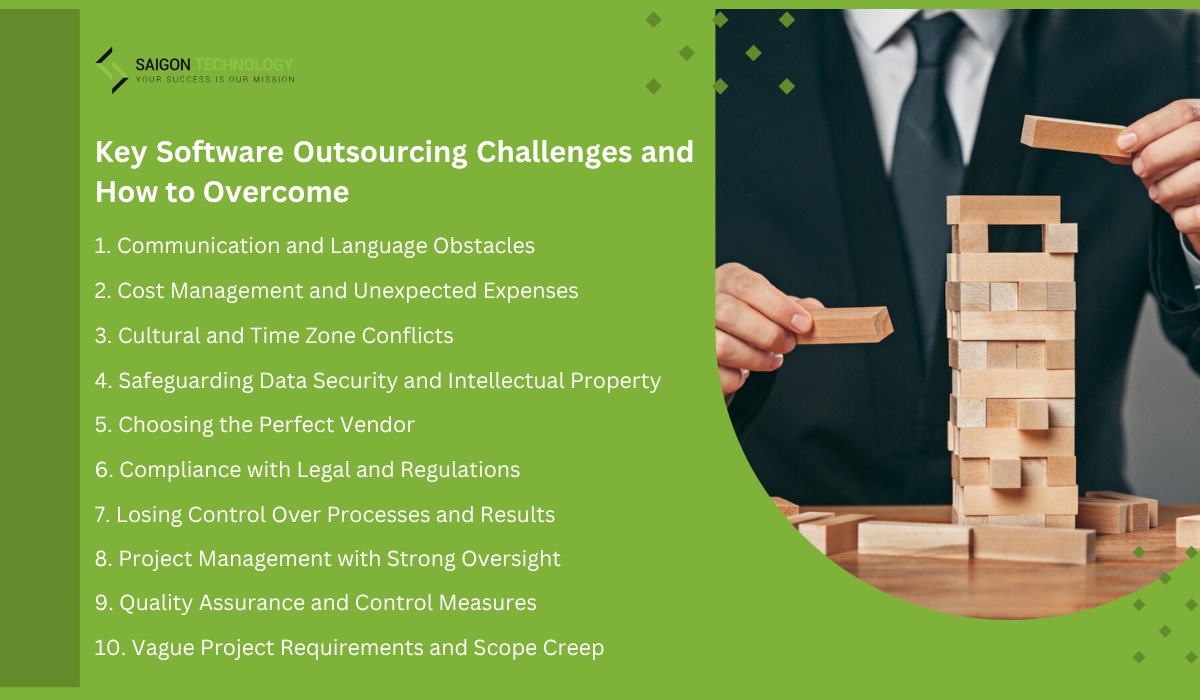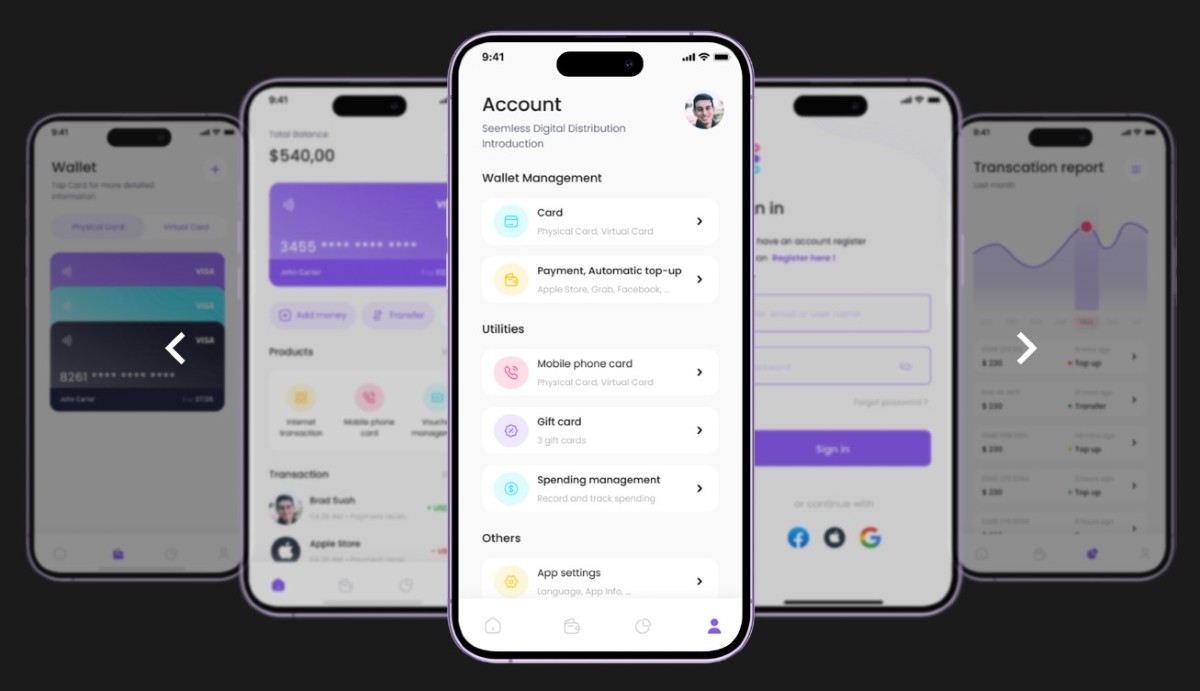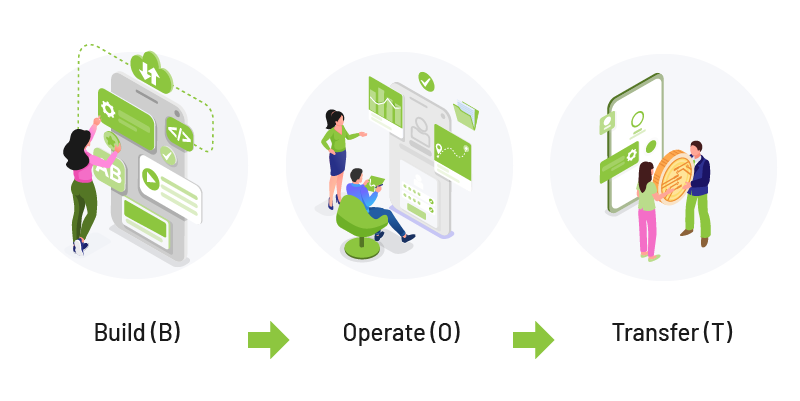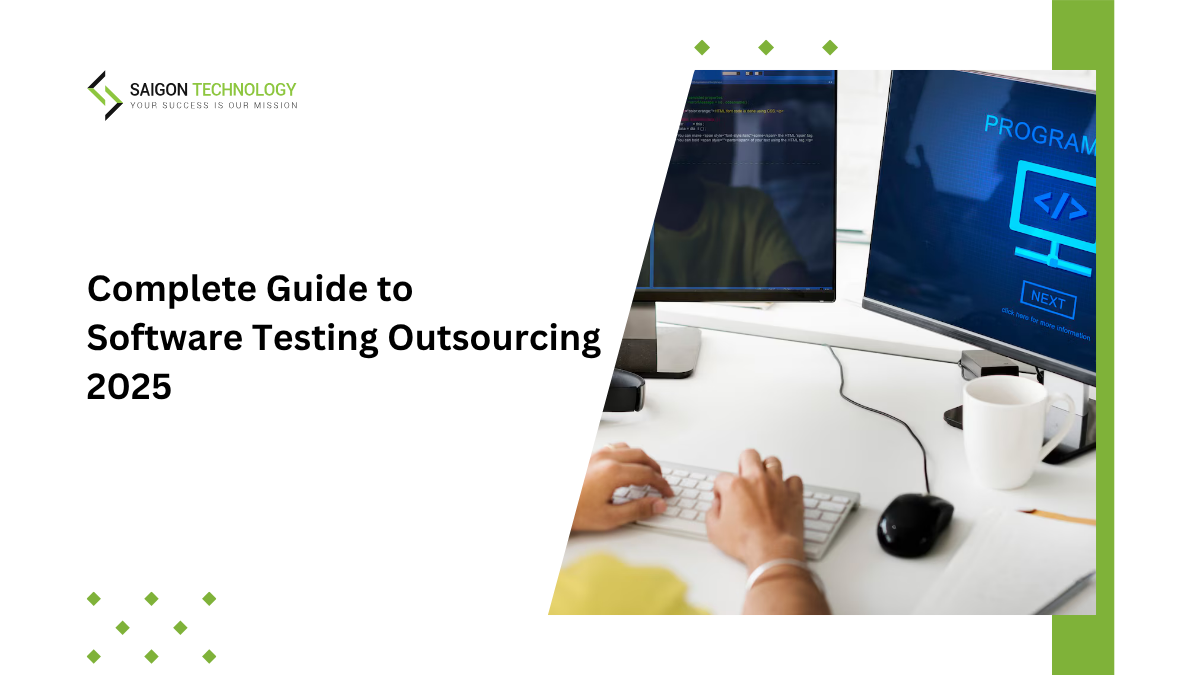Want to outsource your software project? You will get access to global talent and enjoy real cost savings. But it’s not all easy. Many businesses encounter communication breakdowns and tricky asynchronous work. They end up with budget overruns. There are some software outsourcing challenges to deal with. After working in the industry for over a decade, we have pinpointed real obstacles you may face when outsourcing your software. Follow our lead to discover! You can then avoid costly mistakes and bring success!
Key Software Outsourcing Challenges and How to Overcome
Software outsourcing means you work with external professionals. This approach comes with risks related to communication and security. And there’s more than that! Let us break it down!

1. Communication and Language Obstacles
Communication is key to your project’s success. And here comes the first problem: communication breakdowns!
Miscommunication due to Language Differences
Varying levels of English proficiency create communication gaps. Then, time zone differences come to make it even worse. How can you interact with your partner when both fail to understand each other’s language? To deal with language barriers, try these solutions:
- Choose an outsourcing partner with good English skills.
- Use overlapping working hours for real-time interactions.
Ambiguity In Technical Requirements
You may misinterpret technical requirements and goals. It’s one of the most common software outsourcing challenges when working across borders. In this case, you need to:
- Document requirements clearly and simply.
- Ask your partner to confirm understanding and avoid misaligned expectations.
- Create SOPs to encourage clarity.
- Ensure structured onboarding so that everyone stays aligned from day one.
Ineffective Communication Tools
Communication channels keep your teams connected. If you choose the wrong ones, you will face confusion. The solutions are as follows:
- Consider unified project management software and collaboration tools. Slack and Microsoft Teams are the most common choices here.
- Use video conferencing tools to improve face-to-face interactions.
- Provide cultural awareness training to bridge cultural differences.
- Assign multilingual project liaisons.
2. Cost Management and Unexpected Expenses
Many businesses outsource their software to save costs. It’s true, but there are some outsourcing challenges related to expenses to consider.
Hidden costs
The challenges of outsourcing go beyond hourly rates. Think about onboarding, training, and timezone delays. Poor quality requires rework, increasing the cost. These unexpected expenses quickly add up. In the end, you will miss deadlines and delay time-to-market. The best solutions are:
- Perform a complete cost analysis before starting.
- Keep track of every experience with a cost-tracking system.
- Set buffer allocation for development hours.
- Consider software license fees.
- Use a shared work management platform to reduce confusion and delays.
Unclear Contract Terms
If the contract isn’t clear, you may have to pay surprising fees. Underestimated costs will lead to budget overruns. How can you deal with this problem?
- Clearly define the scope from the start, whether you choose fixed-price contracts or a staff augmentation model.
- Set a clear payment schedule based on milestones.
3. Cultural and Time Zone Conflicts
Global teams bring exceptional talent to the table. However, they come with software outsourcing challenges in terms of collaboration. Communication barriers require good planning.
Cultural Differences
You and your partner communicate, give feedback, and handle conflicts differently. For example, a US manager may prefer direct talk. Meanwhile, a Vietnamese engineer is too shy to say “no.” So, aside from language barriers, you need to work on company culture compatibility. Think about how to tackle these IT outsourcing challenges early. For example:
- Provide cultural sensitivity training to find mutual understanding.
- Ensure your partner has a good onboarding experience.
Time Zone Differences
Working across borders means time zone differences. A 12-hour gap between New York and India can cause trouble. Without clear plans for asynchronous work, delays may occur. You can try these steps to overcome this challenge:
- Set overlapping working hours for real-time collaboration.
- Use async productivity and time-tracking tools like Notion, Slack, and Loom.
- Choose the Follow-The-Sun model for consecutive task execution.
4. Safeguarding Data Security and Intellectual Property
If you outsource web development or mobile app development projects, you gain access to top global talent and significantly reduce costs. However, you also face serious risks related to data security and intellectual property (IP) protection.
Risks to Confidential Data and Trade Secrets
If your vendor lacks strong security protocols, your data will be at risk. Inadequate data protection leads to GDPR violations. A misconfigured cloud handling results in a data breach. Your proprietary algorithms and confidential roadmaps will suffer as well. So, how to overcome such outsourcing challenges?
- Choose vendors who follow strict cybersecurity standards, like ISO 27001.
- Set clear access controls based on roles.
- Run security audits to pinpoint potential issues early.
- Set up backup systems in case of disaster.
IP Ownership
Be careful with IP rights, too. Without a strong Non-Disclosure Agreement (NDA) or IP clause, the external developer may reuse your code. They may even claim ownership of the final product. In this case, consider these measures:
- Define all IP terms clearly in your contract.
- Use an NDA to protect your ideas.
- Apply internal risk management measures to monitor IP use.
5. Choosing the Perfect Vendor
Choosing the right vendor is the first step. Once you’ve got a reliable partner, you can ensure success. But this task isn’t easy. There are some challenges of outsourcing to watch out for.
Choosing Only Based on Portfolio
Many businesses pick a vendor just because they built a nice UI. Yet, it doesn’t show how they handle your technology stack, deadlines, and agile workflows. Communication style and cultural fit are essential, too. You also need to consider their long-term scalability. To avoid this problem, you should:
- Start with a solid pre-screening process.
- Define your project goals, compliance needs, and working style.
- Test how they respond in early interactions.
- Seek relevant case studies and do thorough background checks.
- Request a pilot phase to evaluate how your partner really performs.
Vague Promises
Some vendors give you promises but avoid sharing client feedback. You should wait a little bit before moving to the next stage. Improper vendor evaluation will lead to poor delivery. You will also face mismatched expectations and low quality. Poor project management is another issue. So, what should you do?
- Check for clear timelines and proposals.
- Choose vendors who ask thoughtful questions and show business understanding.
- Check customer reviews and their track record.
- Make sure they meet your security standards and have a knowledge transfer strategy.
- Aim for a healthy cost-to-quality balance.
6. Compliance with Legal and Regulations
Your software must follow specific rules. If you fail to do it, you will face fines and tons of issues. Compliance is among the trickiest IT outsourcing challenges. Let’s see what you may encounter.
Data Handling Mistakes
Managing data across borders is challenging. You must follow regulatory and compliance requirements like GDPR or CCPA. Otherwise, get ready for punishment. Check these tips before starting:
- Make sure your outsourcing contracts include strong data management processes.
- Work with vendors that follow global security protocols.
- Choose partners with certifications like ISO 27001 and SOC 2.
Code Ownership Issues
Without clear terms, you may not legally own what your team builds. How can you handle this? The idea is to make it very clear in the agreement:
- Set clear rules in your contract.
- Use a Non-Disclosure Agreement (NDA) or non-compete clause to protect your codebase.
- Include service-level agreements to define who owns what.
Legal Risks Across Borders
Different countries mean different laws. You can’t assume your local rules apply. When you choose to outsource your software, you have more things to learn. Here are some tips for effective risk management:
- Work with companies familiar with relevant regulations.
- Hire an international lawyer to review your contract.
- Make sure the agreement covers the limits of confidentiality.
- Define penalties for breaching the contract.
- Include applicable legal jurisdiction in the contract.
7. Losing Control Over Processes and Results
When learning about the challenges of outsourcing, do not miss out on control. It isn’t only about staying involved in the progress. You need to deal with tons of issues like productivity loss and communication gaps.
Lack of Control
First, work on the lack of control over the team and processes. Different time zones are already a big issue. Unclear updates and missed sprint demos can also leave you in the dark. In the end, you will suffer from missed deadlines. Another problem is the misalignment between expectations and progress. Finally, you will get in trouble with sensitive data breaches. Some solutions to consider are:
- Avoid unclear project goals by defining them clearly from the start.
- Employ tools like ClickUp and Jira to ensure transparent communication.
- Use weekly video syncs and sprint retros to keep progress visible.
Quality Concerns
When you don’t have enough oversight during the software development process, things can slip fast. You may end up with cost over quality and hurt customer experience. Moreover, without proper control, rework and missed goals become more common. A shortage of skilled resources and regular turnover will make everything worse. The solutions for these challenges are:
- Set clear KIPs and performance standards.
- Choose vendors with proven skills.
- Ensure regular check-ins and reviews to catch issues early and keep results on track.
8. Project Management with Strong Oversight
Even with an experienced partner, you still have to monitor everything. If not, problems will arise.
Lack of Structure
One of the biggest software outsourcing challenges is poor structure. When your partner misses deadlines, the whole process will slow down. Sprint reports may lack substance. Time zone gaps and vague sprint goals make it harder to manage. You may also skip quality checks. But don’t worry! Follow these steps to handle it:
- Use an Agile methodology with clear sprint goals, check-ins, and demos.
- Assign an experienced project manager to oversee the whole project.
- Hold regular stand-up meetings across teams to keep up with shared KPIs.
- Set up a shared work management platform like Jira and ClickUp.
- Use communication protocols to manage time zone gaps.
Poor Visibility
You need a collaborative environment to bring out the best in your project. Otherwise, challenges like unclear documentation, vague ownership of tasks, and lack of QA gates will happen. Poor visibility and resource management cause missed project milestones. So, how to handle all of these issues?
- Set up project management software with dashboards.
- Use time-tracking tools to monitor output.
- Conduct regular performance reviews.
- Build risk management plans carefully.
9. Quality Assurance and Control Measures
Testing is among the problems of outsourcing. It confirms that your software is ready to work. If not done correctly, quality assurance can be a nightmare.
For example, your vendor may not assign proper quality assurance engineers. They even skip planning for QA during sprints. As a result, test coverage is poor. Bugs will easily slip through. Without a solid quality assurance framework, there’s no process to catch issues early. Moreover, your partner may miss unit tests or integration tests. All contribute to a weak product. Solutions here can be:
- Define test plans carefully in sprint planning.
- Use project management tools to monitor the testing process properly.
- Add quality gates for every release.
- Include user acceptance testing before launch.
- Automate with a SAST tool and static analysis.
- Build a code review culture between developers and testers.
- Use encryption protocols and regular security audits.
10. Vague Project Requirements and Scope Creep
Many software outsourcing challenges start with unclear project requirements. The further your project goes, the more complicated it gets. There are two things to focus on:
Weak Foundation
The foundation here refers to product vision, project goals, and deliverables. If you can’t make it clear from the start, your partner can’t make it right. Plus, without proper documentation, you may get the wrong features and fail to hit project milestones. Here’s what you should do:
- Start with a detailed discovery phase.
- Define clear project specifications and metrics.
- Create a BRD or user story backlog.
- Validate ideas with mockups and early feedback.
- Check project management gaps before coding.
Scope Creep
You must be excited when your project starts. However, a few small changes may accumulate over time. For example, you can ask for more features, UI refinements, and edge cases. Suddenly, your budget and timeline are out of control. Then, you will lose track of your original goals. What can you do here?
- Prioritize features from the beginning.
- Use a change request process for any updates.
- Avoid unrealistic deadlines.
- Protect quality assurance whenever changes arise.
Conclusion
Outsourcing software development offers many benefits. You can work with global talent and ensure flexibility. However, software outsourcing challenges may bother you. Communication gaps and quality assurance issues are big concerns. You also have to deal with IP protection, cultural mismatches, and unclear scope.
There are solutions for each challenge. Generally, you need clear requirements and structured governance. Ensure regular feedback loops, too. Together, you and your partner can identify risks early. Plus, you can have the right tools and processes in place. After all, you will control your project correctly. That’s how you reduce misalignment and deliver real value to your audience.
Outsourcing doesn’t mean you have to give up control. It’s a strategic way to boost your strength and scale fast. So, start with a good plan. Smart collaboration helps you grow with confidence. Contact Saigon Technology today for a free consultation on your software development project. Everything good starts here!

















